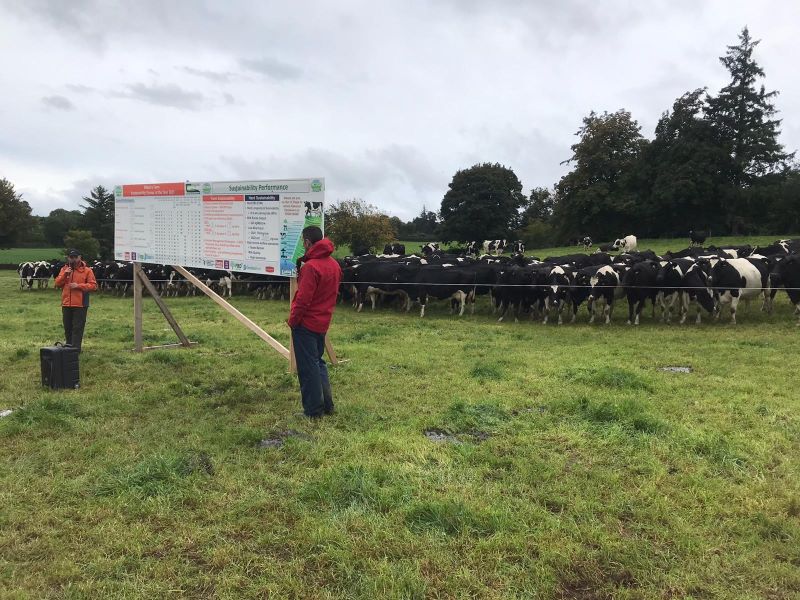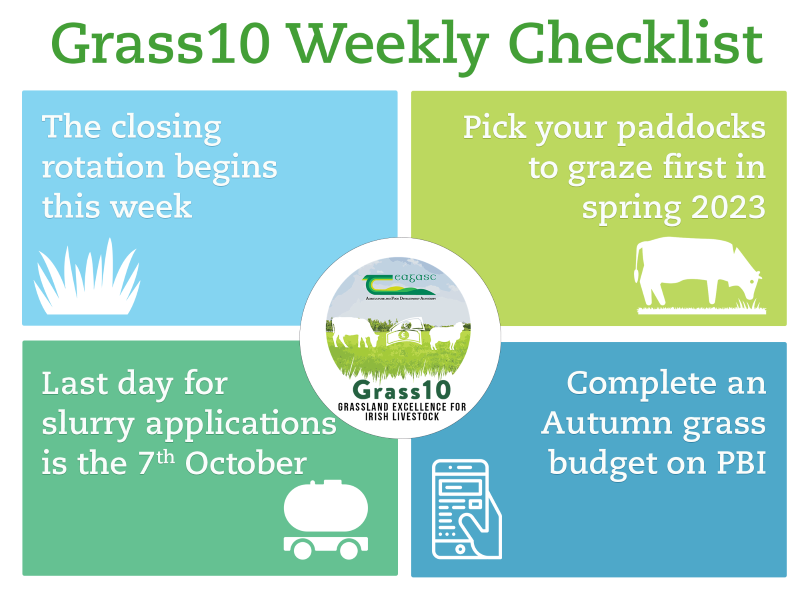05 October 2022
Grass10 Newsletter 4th October
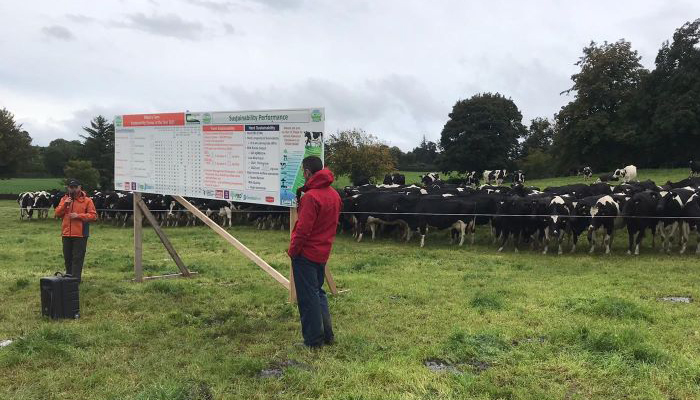
In this week’s Grass10 newsletter, get updates from PastureBase Ireland on predicted grass growth and rainfall. Get information on the grass situation for PastureBase dairy and beef farmers. Get other advice and updates from the Grass10 team.
PastureBase Ireland – Dairy Figures
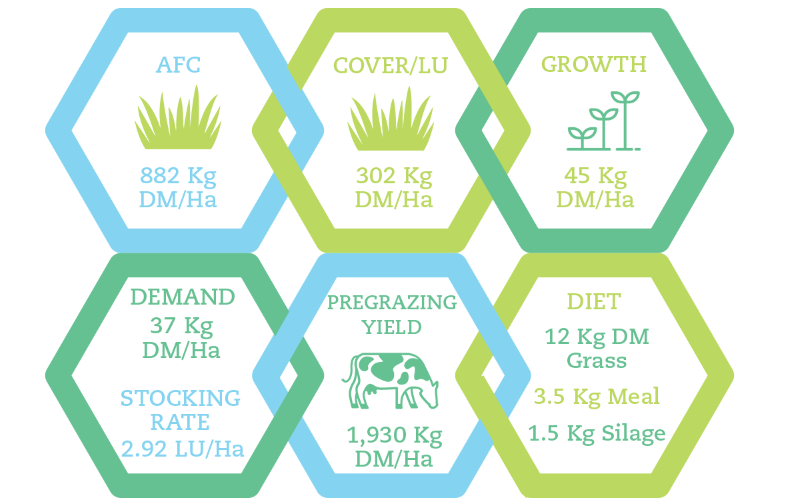
- Average Farm Cover – 882 Kg DM/Ha
- Cover/LU – 302 Kg DM/Ha
- Growth – 45 Kg DM/Ha
- Demand 37 Kg DM/Ha – Stocking rate 2.92 LU/Ha
- Pregrazing yield – 1,930 Kg DM/Ha
- Diet – 12 Kg DM Grass – 3.5 Kg Meal – 1.5 Kg Silage
Predicted Grass Growth
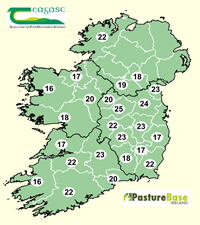 Counties map showing predicted grass growth over the next 7 days from farms involved in Elodie Ruelle’s MoSt grass growth model on 78 farms.
Counties map showing predicted grass growth over the next 7 days from farms involved in Elodie Ruelle’s MoSt grass growth model on 78 farms.
Growth rates are similar across the country ranging from a low 32 in Kerry to a high of 50 in Louth and Wexford
Predicted rainfall
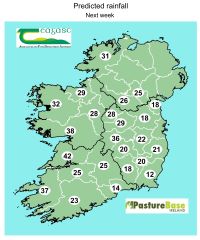
Counties map showing predicted rainfall in mm for the next 7 days from farms involved in Elodie Ruelle’s MoSt grass growth model – 78 farms.
Rainfall is predicted to have a high of 42mm in Clare to lows in the South eastern counties of 12 – 22mm
Grass Dry Matter %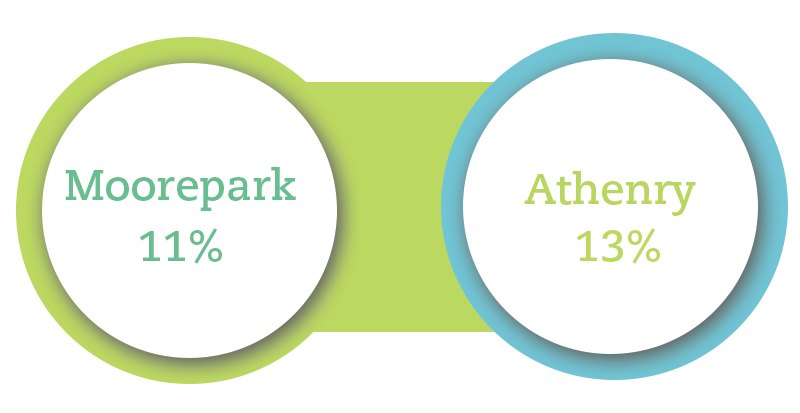
- Moorepark 13.2%
- Athenry 14%
Grass 10 Weekly Tips
- Closing rotation begins this week
- Pick your paddocks to graze first in Spring 2023
- Last day for slurry applications: 7th October
- Complete an Autumn grass budget on PBI
The closing rotation begins this week
All dairy and beef farms should begin closing-up this week. While the actual day you begin closing is really dictated by the day the stock are housed, it is important to have a planned start date. Every week delay in closing reduces spring grass supply by 100 Kg DM/ha. Paddock choice during closing is critical (see below). To get good clean outs on paddocks use a strip wire, graze heavier covers on drier days, keep silage out of the diet, and keep meal levels as low as possible. The aim on dry farms is to have 60-70% of the farm closed by 1st November and heavy soils about 80%. So for a 30ha farm this means grazing 20ha (66%) in 25 days, i.e. 0.80ha/day or 5.5ha per week.
Pick your paddocks to graze first in Spring 2023
The paddocks we want to graze first in the spring should be the easiest ones to get stock out to from the yard, drier, good access, roadways on 2 sides, recently reseeded for quicker growing and the cover should be 700-1100 kg DM/Ha in February. Grazing lighter covers means they are easier to graze out, and grazing more area to reach 30% grazed by March 1st. Stock are less likely to do damage and these paddocks should recover quickest to start the 2nd rotation on time. If these paddocks are closed up early in the autumn the cover will be too heavy for freshly calved cows or cattle who need to adjust back to grazing. Ensure the paddocks you want to graze first in the spring are grazed from October 20th until early November. See diagram below.
Last day for slurry applications is the 7th of October
Reminder that the deadline for slurry applications is October 7th. Target any remaining slurry to low index soils and where silage has been cut. It is important to check soil samples and order lime for paddocks with a pH below 6.2. This will help release nutrients and make all fertiliser more effective. It will probably be the best fertiliser you buy for 2023!
Complete an Autumn Grass Budget on PBI
Farm cover has continued to build slightly this week. However grass growth will be variable with weather conditions, with predictions ranging from 32-45 KgDM/ha/day. This means AFC is peaking on most farms this week. Complete a grass budget on PBI to make the most of this grass. Why? Because it will help stretch grass for longer. Stretching out grass will increase the amount grown and every day at grass increases profitability of your farm. The budget will indicate how much silage will need to be fed before the winter starts, this is crucial to allow farmers to take action if fodder deficits exist.
Where AFC is still <80% of the target, farmers should continue to keep supplement in the diet to reduce demand. This will maintain AFC and continue stretching the grazing season. Remember grass grows grass, so capitalise on this!
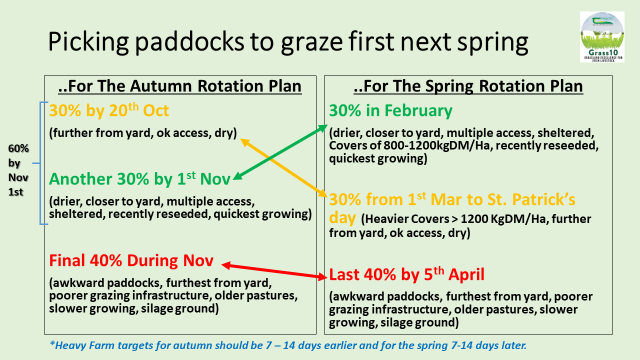
Upcoming Grassland Farmer of the Year Walks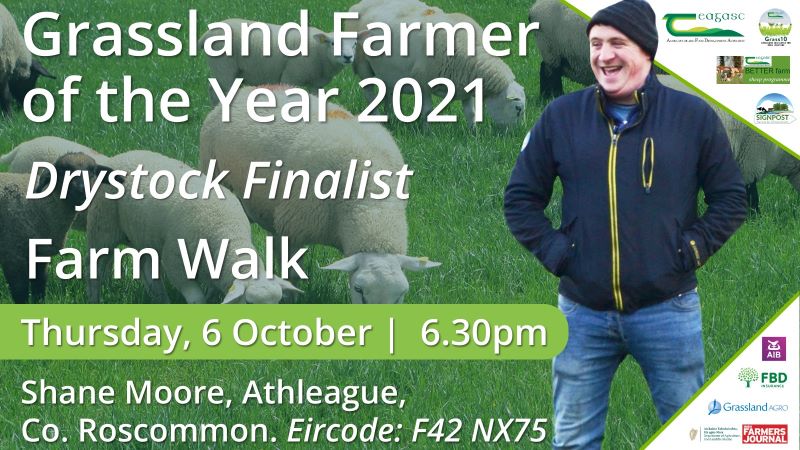
Read more about Shane Moore’s farm & farm walk here:
PastureBase Ireland – Drystock Figures
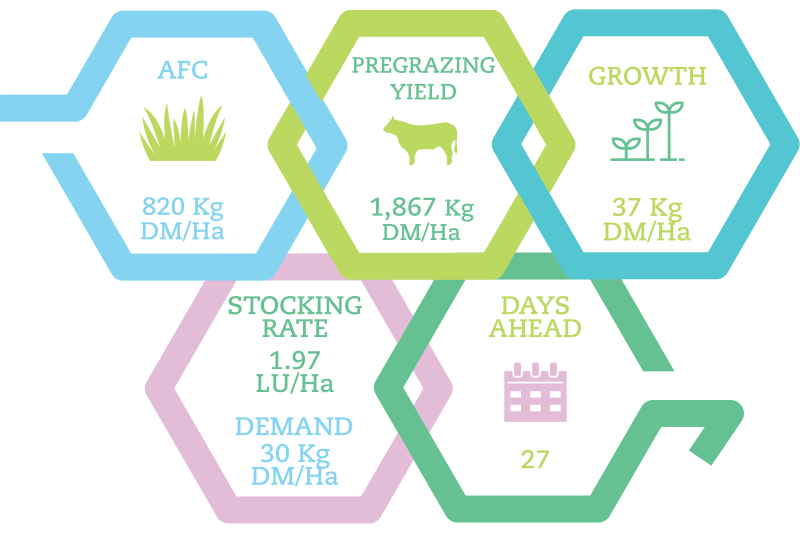
- Average Farm Cover – 820 Kg DM/Ha
- Pregrazing yield – 1,867 Kg DM/Ha
- Growth – 37 Kg DM/Ha
- Stocking rate – 1.97 LU/Ha
- Demand – 30Kg DM/Ha
- Days ahead – 27
The Clover Reporter

This section gives weekly reports and videos from farmers who have a lot of clover established on their farms.
This week,we return to Dairy farmer Kevin Moran from Co. Galway who updates us on his autumn plans for his grass – clover swards and a sample of what some of his grass – clover swards have grown year to date
Location: Caherlistrane, Co.Galway
Enterprise: Spring calving dairy farming
Soil Type: Mix of sandy free draining loam and clayey type loam
% Farm In Clover: 68% 73 (ha)
% From Reseeding: 10% – 10 ha
% From Oversowing: 58% – 63 ha
Clover content 2022: 25 % on 73 ha
Read Kevin’s full clover report here
Grassland Farmer of the Year Events
Philip Tyndall
Last week, Phiip Tyndall hosted his farm walk as winner of the Young Farmer of the Year award in the 2021 Grassland Farmer of the Year award. Some of Philip’s future plans are-:
Grassland:
- Grow 14t DM/ha per year
- Clover & 150kg N/ha
Environmentally Sustainable System
- Clover incorporation (NUE)
- Reduce supplement to less than 1 ton of meal/cow
People Sustainability
- Simple farm system
Evening milking relief
Shorter calving season – 9 weeks
Shorter milking season with same MS output
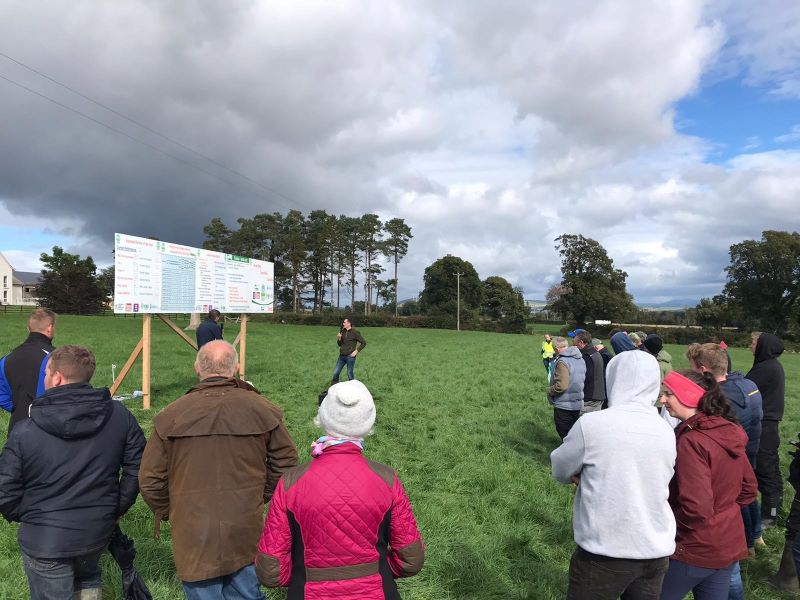
Brendan and John Walsh
Tuesday 4th October was the turn of Brendan and John Walsh in Tipperary, who were the Sustainability Winners of the 2021 Grassland Farmer of the Year. Over 100 people turned out on a damp morning to hear how the Walsh’s have reduced the N spread on the farm to 165 Kg in 2021. Some of the key points on the Walsh’s farm in relation to clover were-:
- 63% of farm with clover, majority from reseeding
- 80% clover by 2025 with oversowing playing a role in reinvigorating older clover swards
- Vital to get post emergence spray on at 5 weeks and grazing at 6 weeks in a normal summer
- Zero N on the reseeded swards as the soil fertility is excellent
- Fibre in the diet such as straw to reduce the risk bloat at times of high growth rates in the Autumn
